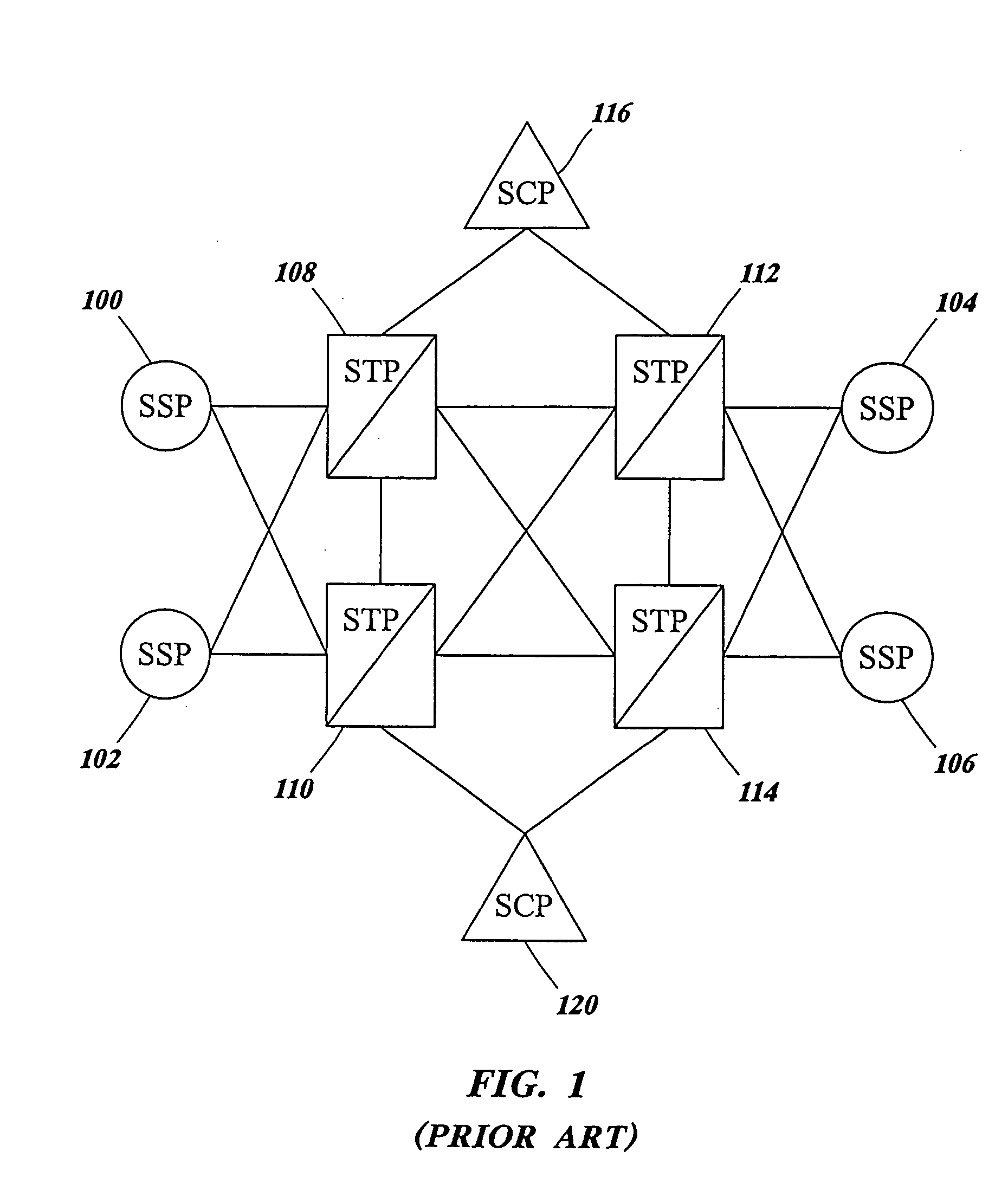Methods and systems for communicating SS7 messages over packet-based network using transport adapter layer interface
a technology of transport adapter and layer interface, which is applied in the direction of data switching network, supervision/control auxiliary connection, digital transmission, etc., can solve the problems of inefficient installation or leasing of sufficient call signaling bandwidth for peak conditions, link over-utilization, and high installation or lease costs
- Summary
- Abstract
- Description
- Claims
- Application Information
AI Technical Summary
Benefits of technology
Problems solved by technology
Method used
Image
Examples
Embodiment Construction
[0033]FIG. 2 illustrates an exemplary operating environment for embodiments of the present invention. In FIG. 2, conventional SS7 network elements, such as SSPs 200, 202, and 204 and SCP 206, communicate with each other over SS7 network 208. IP nodes, such as media gateways (MGs) 210, 212, and 214, media gateway controllers (MGCs) 216 and 218 and Internet service provider (ISP) 220, communicate with each other over first packet-based network 222. Similarly, signaling gateways 224 and 226 communicate with MGCs 216 and 218 and with SCP 228 via second packet-based network 230. First and second packet-based networks 222 and 230 may each comprise IP networks. Moreover, first and second packet-based networks 222 and 230 may be the same logical network. The reason that networks 222 and 230 are illustrated separately in FIG. 2 is that first packet-based network 222 carries packetized media stream communications between MGs, and media control information between MGCs and MGs, and second pack...
PUM
 Login to View More
Login to View More Abstract
Description
Claims
Application Information
 Login to View More
Login to View More - R&D
- Intellectual Property
- Life Sciences
- Materials
- Tech Scout
- Unparalleled Data Quality
- Higher Quality Content
- 60% Fewer Hallucinations
Browse by: Latest US Patents, China's latest patents, Technical Efficacy Thesaurus, Application Domain, Technology Topic, Popular Technical Reports.
© 2025 PatSnap. All rights reserved.Legal|Privacy policy|Modern Slavery Act Transparency Statement|Sitemap|About US| Contact US: help@patsnap.com



